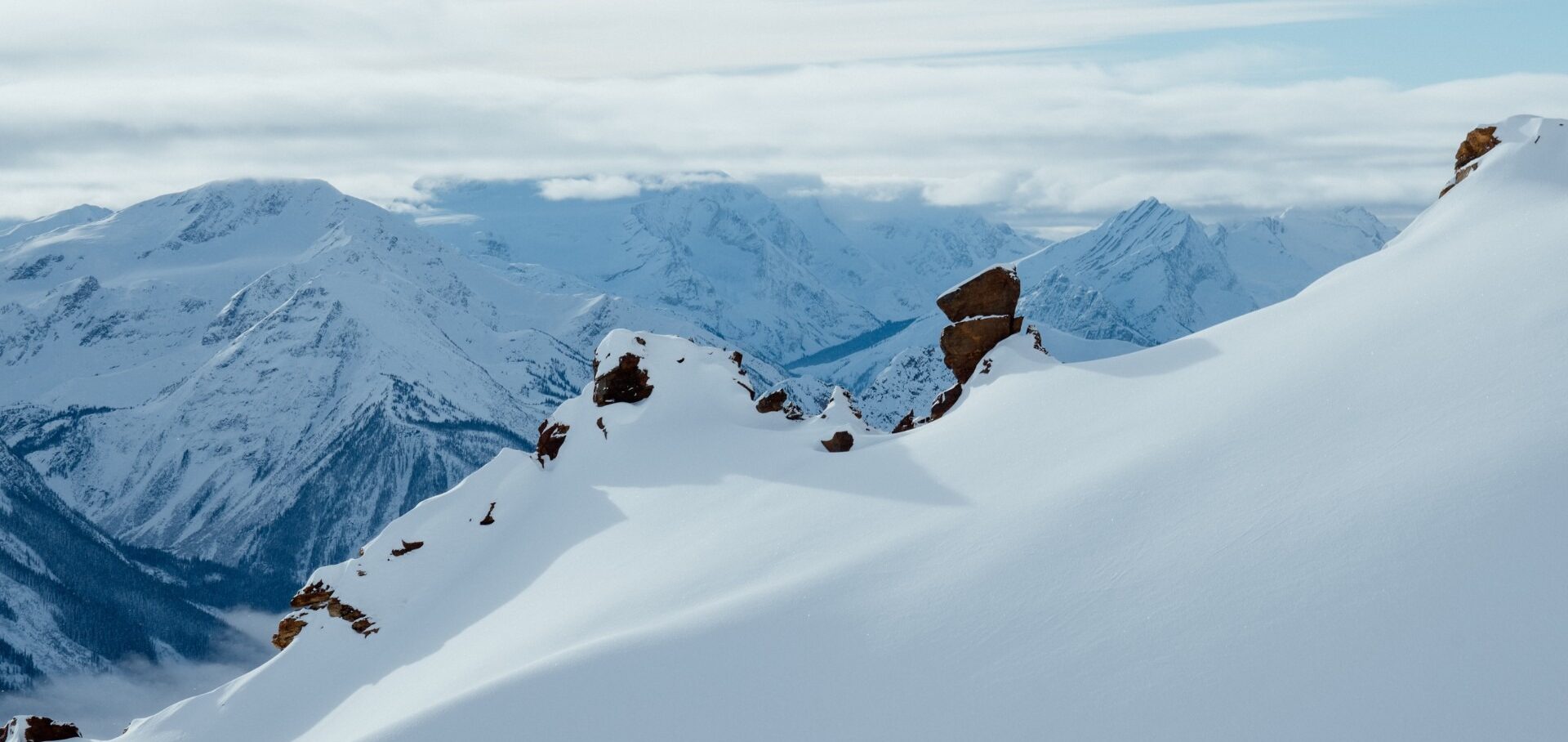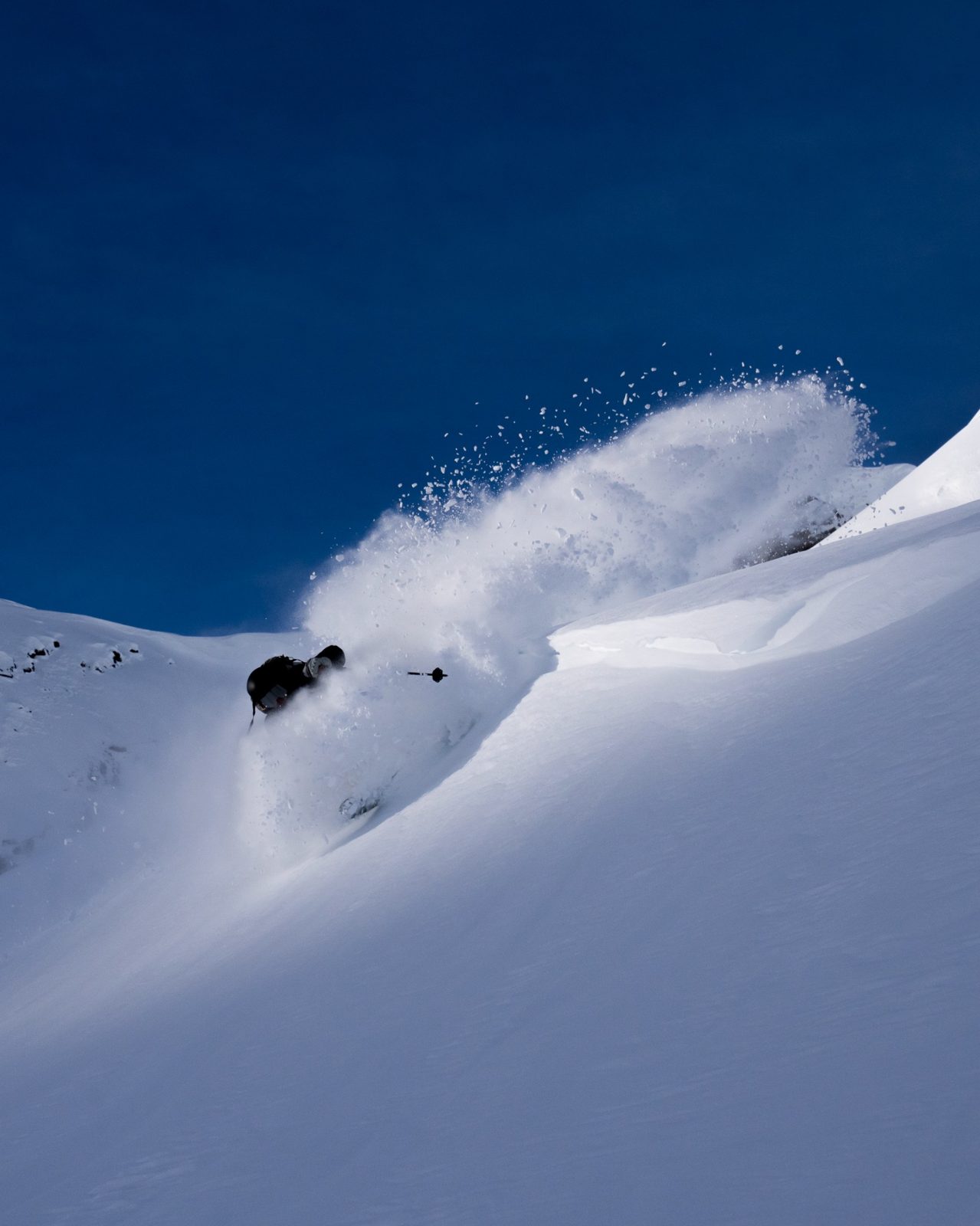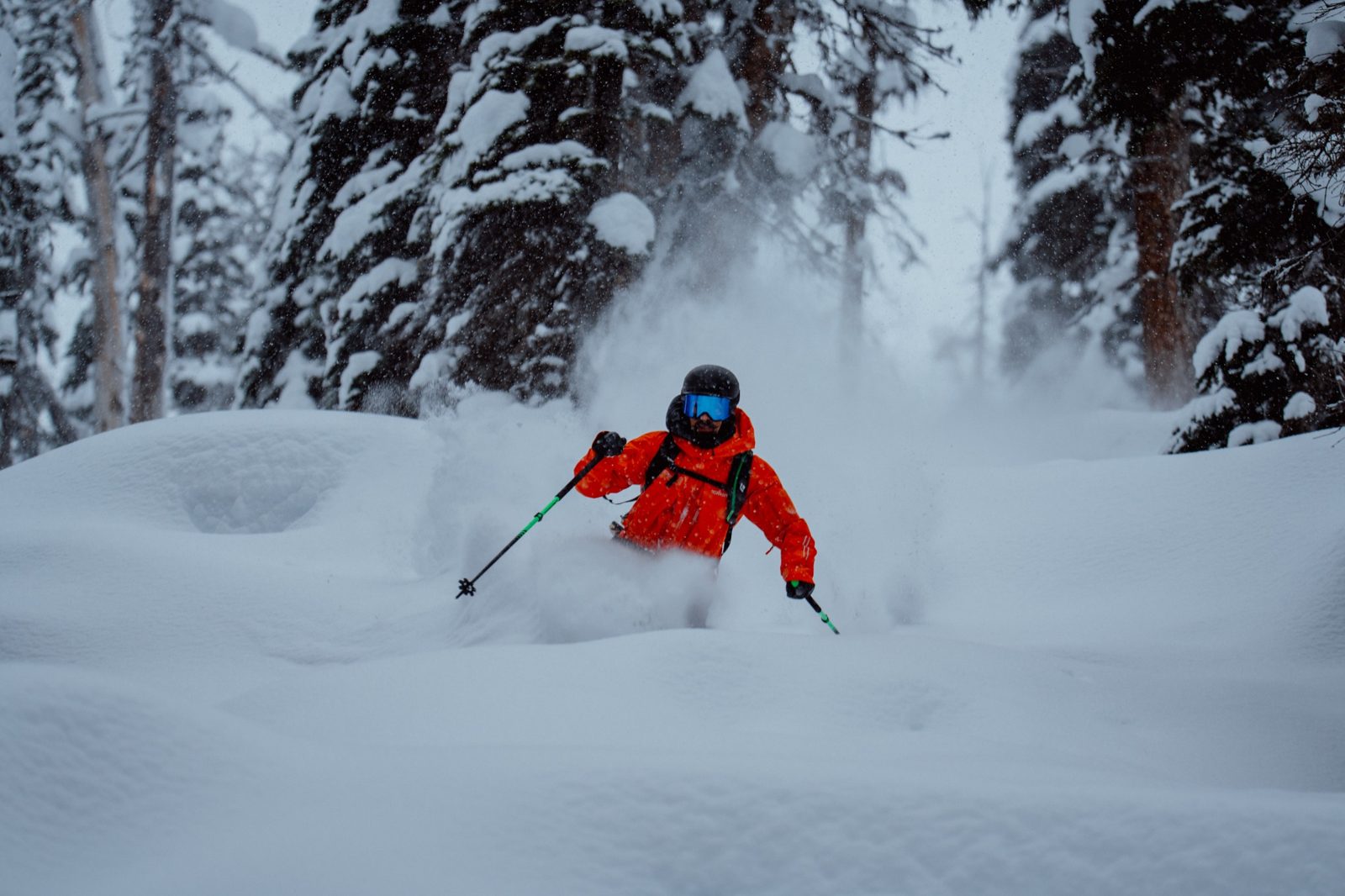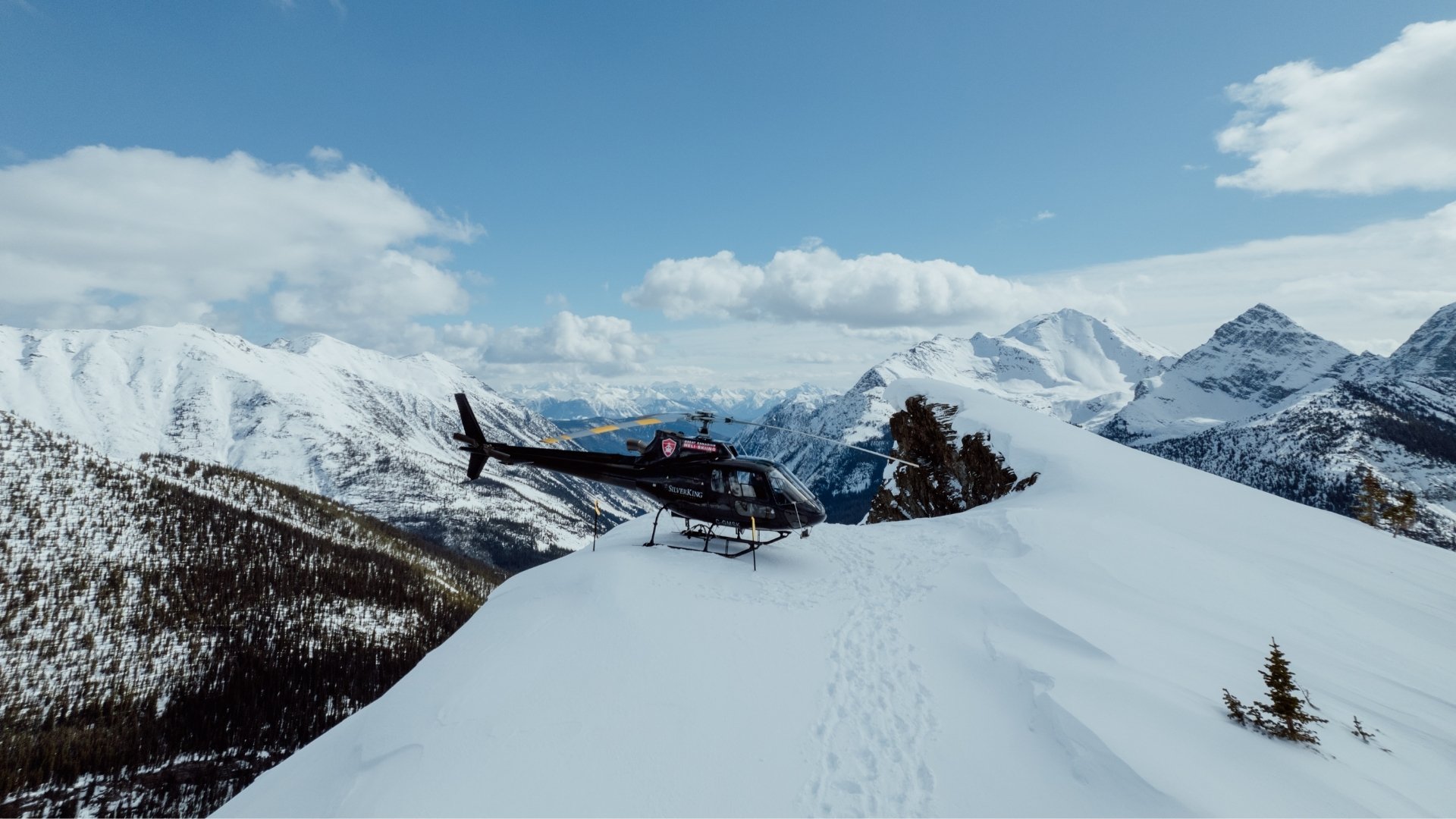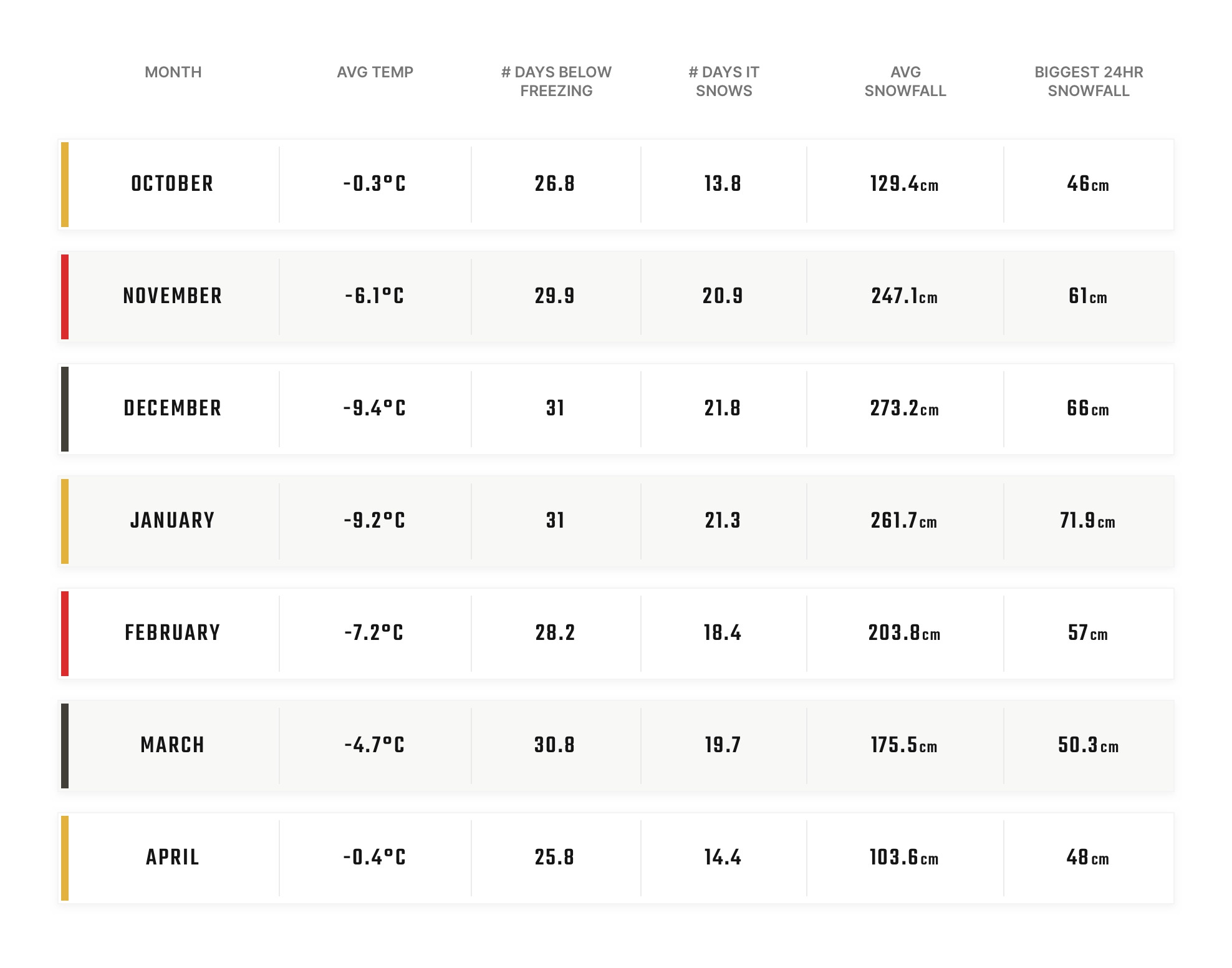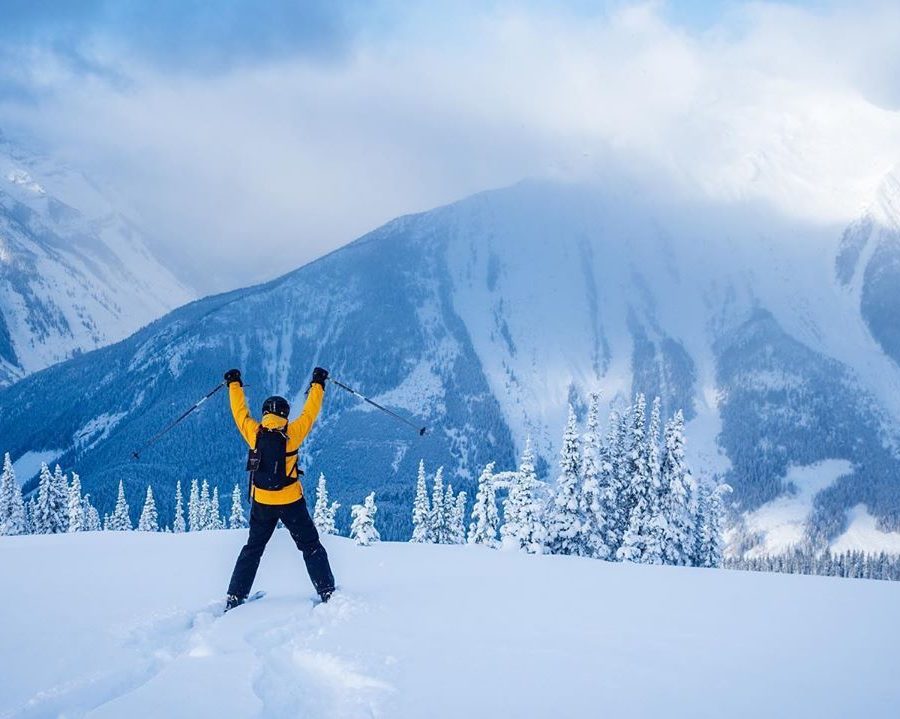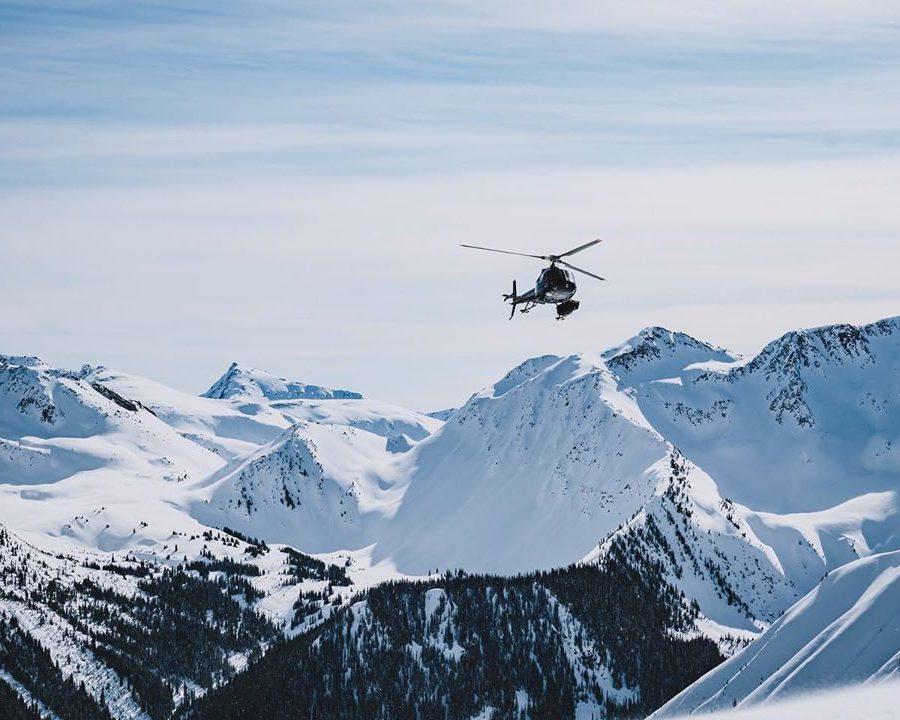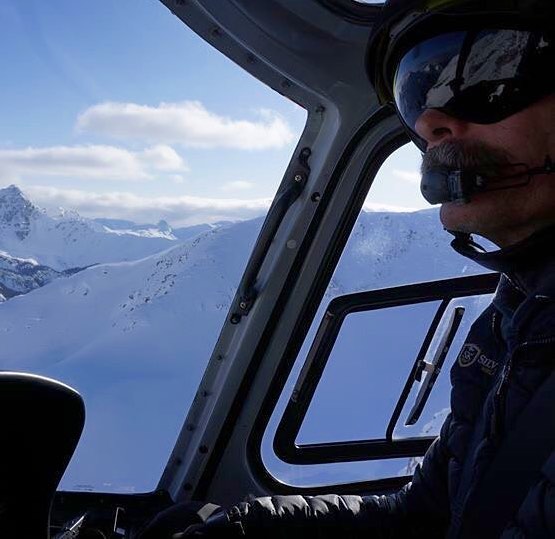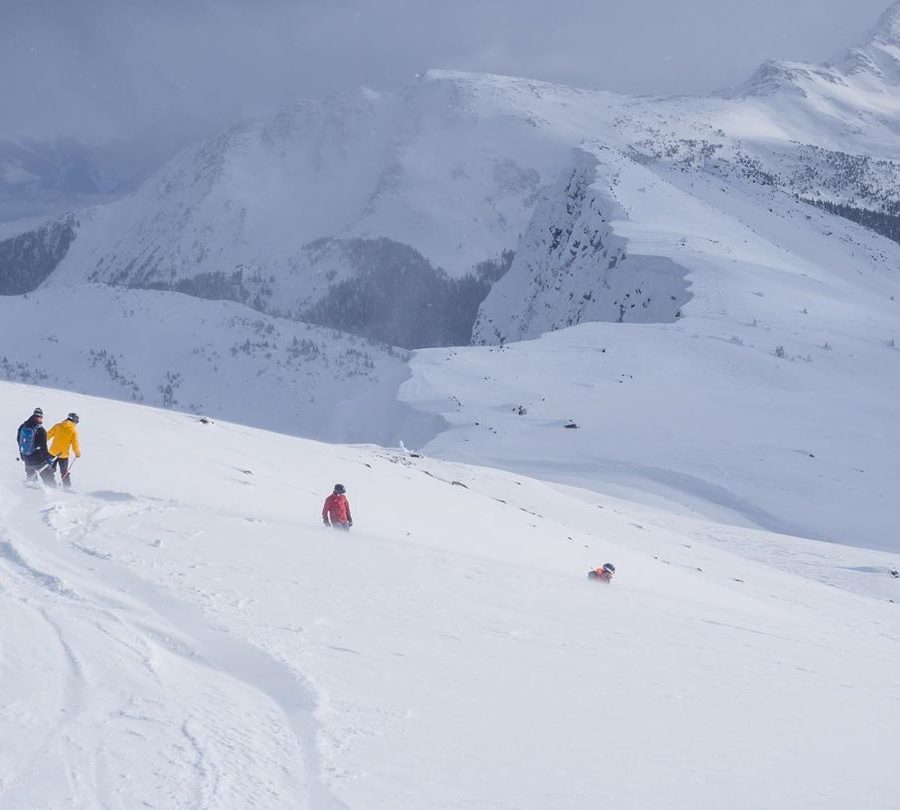When you’re based in the powder belt, every month is epic. Choose your adventure below.
December, January, early February
Lots of powder, amazing glades, steeper terrain
Snow’s been falling since October. While crowds pack ski resorts, our terrain is untracked, quietly accumulating layer upon layer of deep light snow. “Cold smoke” is a good way to describe the conditions at the beginning of our season, because temperatures tend to be colder (around -9°C), and the snow is so light it leaves effervescent wisps off the tails of your skis. It also tends to snow a lot at this time of year, with a monthly average of around 262 to 273 centimetres for both December and January—which builds on the hundreds of centimetres that already fell in the preceding months. Guests love this time of year for skiing gladed trees. Also, the holiday season looks gorgeous up here.
Mid-February to early March
Mixture of alpine bowls, glades and powder
This is our most popular part of the season, so tours often get booked out. Average temperatures in February (-7.2°C) are perfect for preserving high-quality dry snow. The quantity of snowfall in February is considerable—on average, over 200 centimetres over the course of the month—and although it still snows a lot, there are more sunny days, which means more opportunity to ski up high in the alpine bowls and glaciers. Quite simply, this period provides a bit of everything, from peak to valley bottom, and consistently pleases fans of tree skiing and glacier skiing alike. You can’t lose—but be sure to book early to avoid disappointment.
Mid-March and April
Alpine bowls, sunshine, and regular short—but intense—snowfalls
If you don’t want to see as many trees on your run or to feel the chill of a super-cold day, this is the season for you. Average highs are still below freezing, but temperatures below -10°C are exceedingly rare. At -4.7°C, March’s average temperature is still cold enough to maintain great-quality snow, and new snow continues to fall through April. In fact, we’ve seen a record 48 centimetres of snow in a single day in April. Dumps of snow tend to be intense, but move through quicker than in, say, December. With more sunny days and a snow base of almost 300 centimetres at the end of April, the glaciers and alpine bowls are in perfect condition for long, glorious days.
